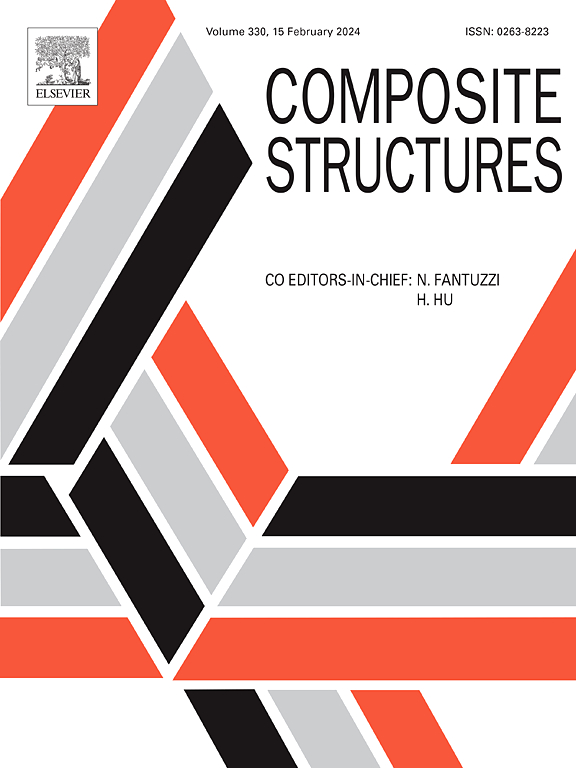基于BESO方法和层合参数的复合材料层合板材料结构分层优化
IF 6.3
2区 材料科学
Q1 MATERIALS SCIENCE, COMPOSITES
引用次数: 0
摘要
本研究首先提出了一种基于双向进化结构优化(BESO)和层合参数的恒刚度复合材料层合板材料-结构并行优化方案。考虑了面内和面外载荷情况,增强了适用性。数值研究通过与顺序优化方法(先优化层合参数后优化拓扑结构)的结果对比,验证了并行优化方案的有效性。然后,认识到整体并发方案的大量计算成本限制了它们的实际实现,本研究利用BESO方法的进化特性进一步开发了一种简化和高效的方法。数值研究表明,在整个拓扑优化过程中,每隔一段时间优化5或6次层压参数,直到达到目标体积,有效地平衡了精度和效率。验证结果表明,简化的分层优化方案与整体并行优化方案效果相当,优于顺序优化方案,并显著降低了计算成本。简化的方法简单、高效、易于实现,有可能支持分层材料结构优化在实践中的应用。本文章由计算机程序翻译,如有差异,请以英文原文为准。
Hierarchical material-structure optimization of composite laminates based on BESO method and lamination parameters
This study first presents a concurrent material-structure optimization scheme for constant stiffness composite laminates, using the bi-directional evolutionary structural optimization (BESO) and the lamination parameters. Both in-plane and out-of-plane loading scenarios are considered to enhance the applicability. Numerical studies demonstrate the effectiveness of the proposed concurrent scheme by comparing its results with those from a sequential optimization approach (where lamination parameters are optimized first and then followed by topology). Then, recognizing the large computational costs of overall concurrent schemes that limit their practical implementation, this study leverages on the evolutionary properties of the BESO method to further develop a simplified and efficient approach. Numerical investigations suggest optimizing the lamination parameters 5 or 6 times at regular intervals throughout the topology optimization process until the target volume is achieved, effectively balancing accuracy and efficiency. Verification results show that the simplified hierarchical scheme yields comparable results to the overall concurrent optimization, surpasses the sequential approach, and significantly reduces computational costs. The simplified approach is straightforward, efficient, and easy to implement, potentially supporting the application of hierarchical material-structure optimization in practice.
求助全文
通过发布文献求助,成功后即可免费获取论文全文。
去求助
来源期刊

Composite Structures
工程技术-材料科学:复合
CiteScore
12.00
自引率
12.70%
发文量
1246
审稿时长
78 days
期刊介绍:
The past few decades have seen outstanding advances in the use of composite materials in structural applications. There can be little doubt that, within engineering circles, composites have revolutionised traditional design concepts and made possible an unparalleled range of new and exciting possibilities as viable materials for construction. Composite Structures, an International Journal, disseminates knowledge between users, manufacturers, designers and researchers involved in structures or structural components manufactured using composite materials.
The journal publishes papers which contribute to knowledge in the use of composite materials in engineering structures. Papers deal with design, research and development studies, experimental investigations, theoretical analysis and fabrication techniques relevant to the application of composites in load-bearing components for assemblies, ranging from individual components such as plates and shells to complete composite structures.
 求助内容:
求助内容: 应助结果提醒方式:
应助结果提醒方式:


